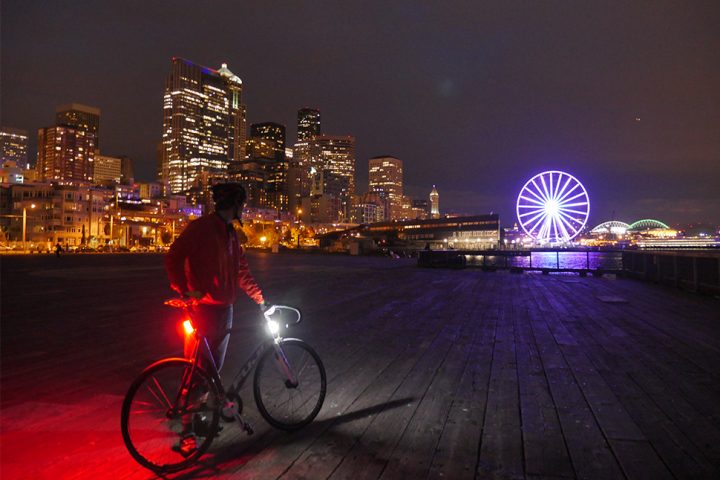
According to its designer Pete Clyde, the Orfos Flare gives cyclists, scuba divers, and other individuals increased visibility at night, underwater, or in just about any other harsh environment you can think of. Just like a chemical flare you’d see put on the road by a police officer, the Orfos Flare is extremely bright — 500 lumens and 300 lumens for the white and red versions respectively. However, the light is diffused outward, not focused like a flashlight, so it illuminates you instead of blinding those around you. Clyde claims that the Orfos is the “brightest 360-degree light” that you can get for a bicycle.
This isn’t the first time we’ve seen bright flashlights on bicycles, but Orfos Flare claims it’s different. For one, the Orfos comes attached to a powerful neodymium magnet, giving it the ability to be attached to almost any part of the bicycle. The Orfos Flare also includes, alternatively, a mounting system using weather-resistant nylon cables to secure the light to just about anything, such as carbon fiber bicycle frames.
The Orfos also has impressive battery life, lasting up to 24 hours on just a 90 minute charge, ensuring many nights worth of visibility. The battery, a lithium iron phosphate (LiFePO4) variant, lasts for more recharges than a typical lithium-ion battery. It also won’t damage the environment when disposed of, unlike its lithium-ion counterparts. This technology is all encased within a waterproof housing that will survive being submerged in up to 50 feet of water.
All in all, this is by far one of the most powerful and durable visibility lights you can get for your bike. It all comes at a steep price though: $120 to back the Kickstarter for just one light and $230 for the red and white bundle. It also won’t be ready until Christmas, assuming everything goes well. In the interim, you can find out more about the light or back the project here.


